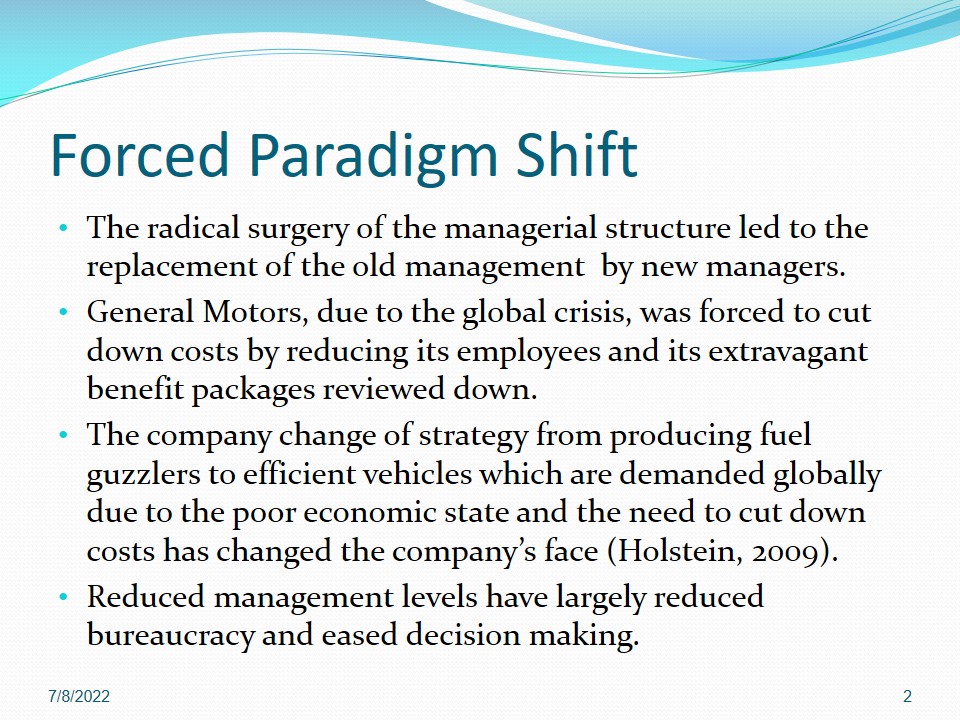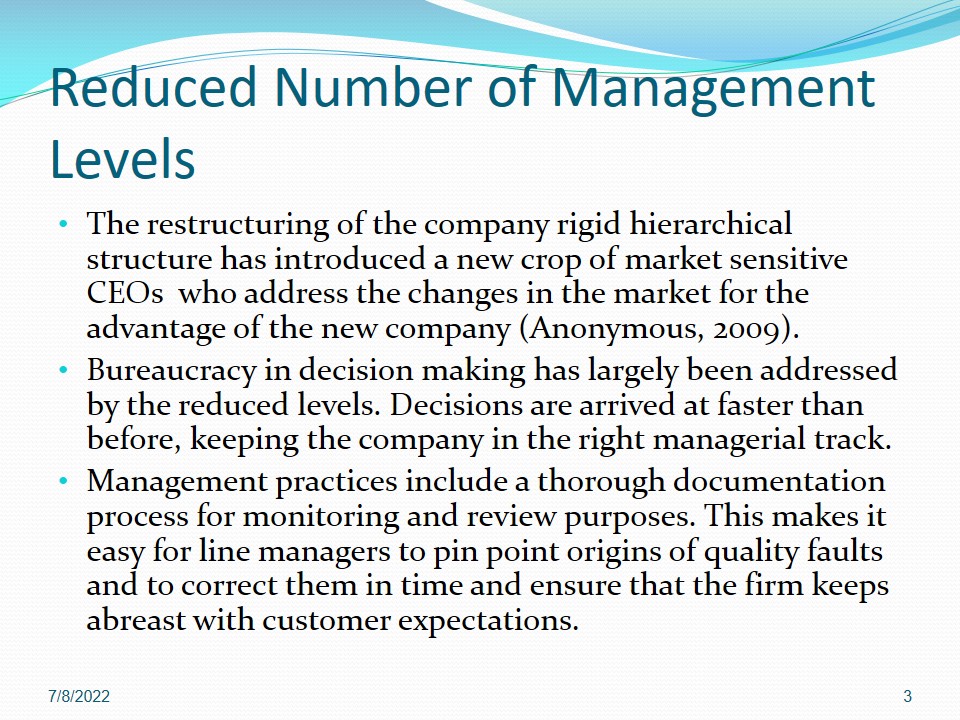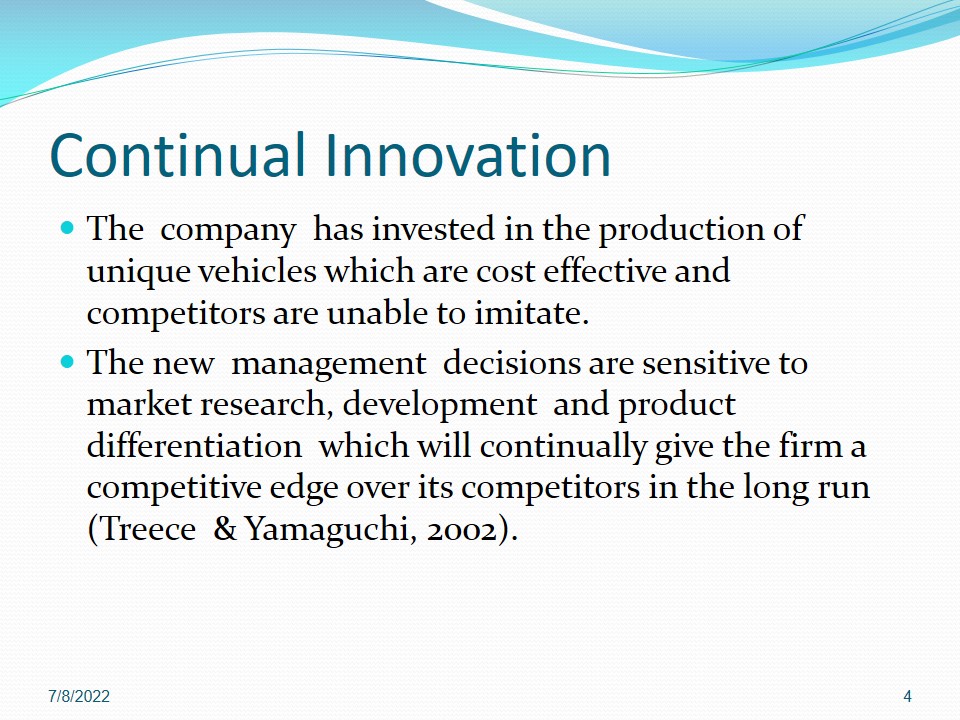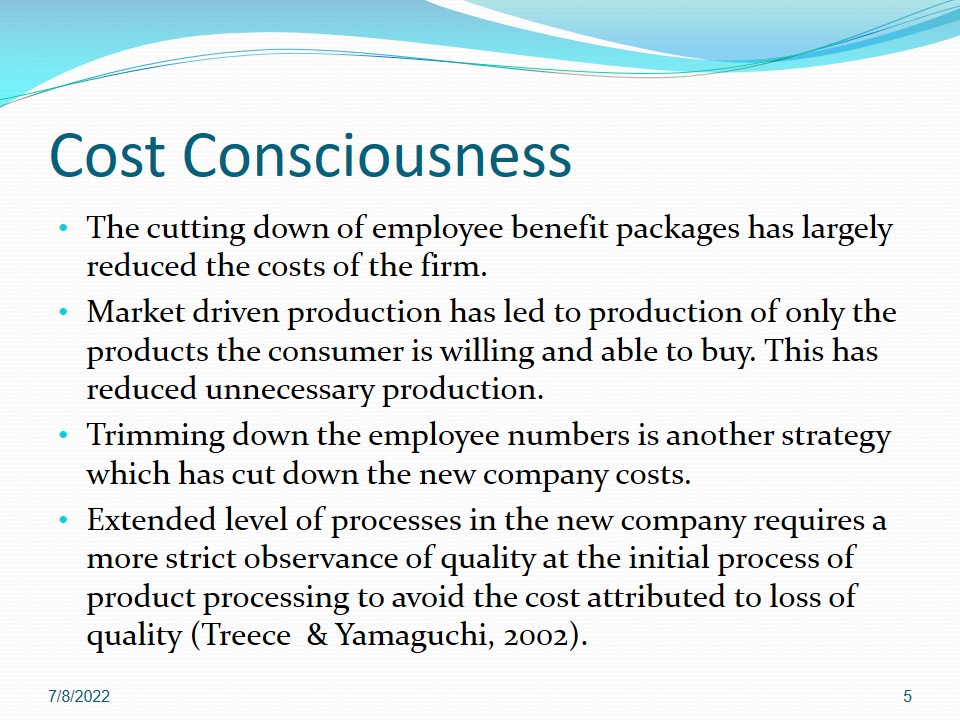Forced Paradigm Shift
The radical surgery of the managerial structure led to the replacement of the old management by new managers.
General Motors, due to the global crisis, was forced to cut down costs by reducing its employees and its extravagant benefit packages reviewed down.
The company change of strategy from producing fuel guzzlers to efficient vehicles which are demanded globally due to the poor economic state and the need to cut down costs has changed the company’s face (Holstein, 2009).
Reduced management levels have largely reduced bureaucracy and eased decision making.

Reduced Number of Management Levels
The restructuring of the company rigid hierarchical structure has introduced a new crop of market sensitive CEOs who address the changes in the market for the advantage of the new company (Anonymous, 2009).
Bureaucracy in decision making has largely been addressed by the reduced levels. Decisions are arrived at faster than before, keeping the company in the right managerial track.
Management practices include a thorough documentation process for monitoring and review purposes. This makes it easy for line managers to pin point origins of quality faults and to correct them in time and ensure that the firm keeps abreast with customer expectations.

Continual Innovation
The company has invested in the production of unique vehicles which are cost effective and competitors are unable to imitate.
The new management decisions are sensitive to market research, development and product differentiation which will continually give the firm a competitive edge over its competitors in the long run (Treece & Yamaguchi, 2002).

Cost Consciousness
The cutting down of employee benefit packages has largely reduced the costs of the firm.
Market driven production has led to production of only the products the consumer is willing and able to buy. This has reduced unnecessary production.
Trimming down the employee numbers is another strategy which has cut down the new company costs.
Extended level of processes in the new company requires a more strict observance of quality at the initial process of product processing to avoid the cost attributed to loss of quality (Treece & Yamaguchi, 2002).

References
Anonymous (2009). Geopolitical diary: The significance of GM’s bankruptcy. Stratfor Geopolitical Diary, p2-2.
Holstein, W. J. (2009). Who’s to blame for GM’s bankruptcy?Business Week Online, p2-2.
Treece, J. B., & Yamaguchi, Y. (2002). Toyota, Honda set profit records. Automotive News, 77/6010, p8-8.